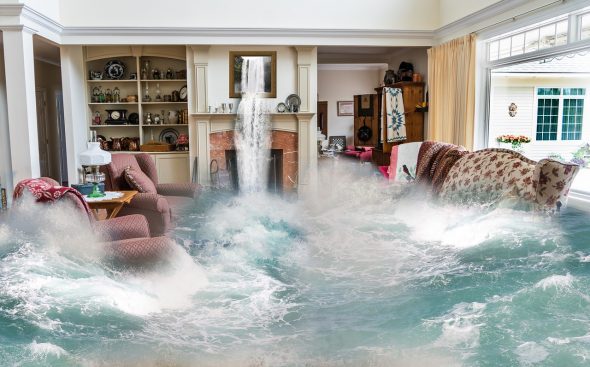When you experience an indoor flood at your home, there are many problems you might face in the aftermath, from doing water damage clean up and removing mold to salvaging your treasured belongings. Because flooding can cause so much water damage, prevention can be key to avoiding time and money spent to clean up after water enters your home. You deserve a water damage restoration company that will put you first.There are several causes for indoor flooding, and knowing what they are and how to prevent them can help you protect your family and property from these dangerous and costly incidents, this YouTube channel is dedicated to water damage restoration tips and mitigation of home damages in Las Vegas, NV.

1. Outdated Plumbing
If you live in an older home, the plumbing in your kitchen and bathroom may be outdated and prone to leaking. Some leaks may go unnoticed, especially if the plumbing is located behind a wall or under an enclosed cabinet. The longer leaks are allowed to continue, the greater the possibility of a burst pipe, which can result in a considerable flood. If your home is more than twenty years old, you may want to have your pipes inspected by a professional plumber and have older systems replaced, especially if the pipes are made from copper and not PVC material.
2. Clogged Gutters and Downspouts
Spring thaws and torrential summer storms can cause standing water around your home that may seep into your basement and cause a flood. One major cause of this problem is clogged or malfunctioning gutters and downspouts. Old, rusting gutters that have pulled away from your house and downspouts clogged with leaves and other debris can prevent water from draining away from your property. Since proper drainage can be a major factor in preventing basement flooding, it is a good idea to have your home’s outdoor gutter system inspected at least once a year and get help from a great basement waterproofing company.
3. Faulty Toilets
While you may have never considered whether your homeowner’s insurance covers flooding from an overflowing toilet, this can be an important point you might want to go over with your provider. Septic problems can happen without warning, flood your bathroom, and do hundreds of dollars of damage to the walls and floors. However, a bit of preventative inspection can prevent this from happening and avoid a lengthy insurance battle to gain coverage, just make sure to get septic tank services regularly for maintenance. However, when there’s already a septic damage that needs extensive septic tank repairs, you will need to contact a septic repair company for septic tank repair and sewer line repair services.
Your home’s toilet may give several signs of an impending flood, and one of the most obvious is when the base is consistently damp. The moisture may increase after the toilet it flushed. Since this can mean the seal around your unit is failing, it is wise to have it inspected by a qualified plumbing service and repair company.
4. Frozen Pipes
When temperatures plummet, your home’s pipes can be vulnerable to freezing. Pipes that run down exterior walls or connect to outdoor hoses and water lines can fill with water and freeze during cold weather. As the water freezes, it expands, which can cause the pipe to burst and cause a flood. Insulating these pipes with foam caulk or layers of fabric can prevent this from happening and reduce the risk of serious indoor water damage.
There are many ways your home can suffer flood damage. However, many factors that cause flooding can be prevented with a bit of forethought, maintenance, and assistance from your local plumbing service. Get help from the restoration professionals to assess and repair the damage.


